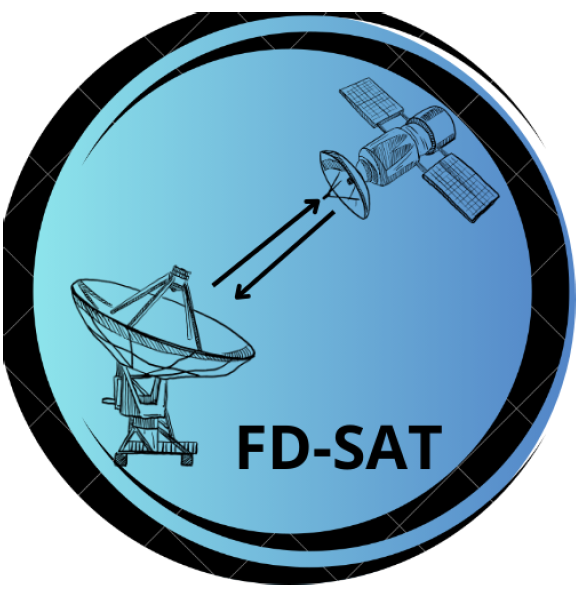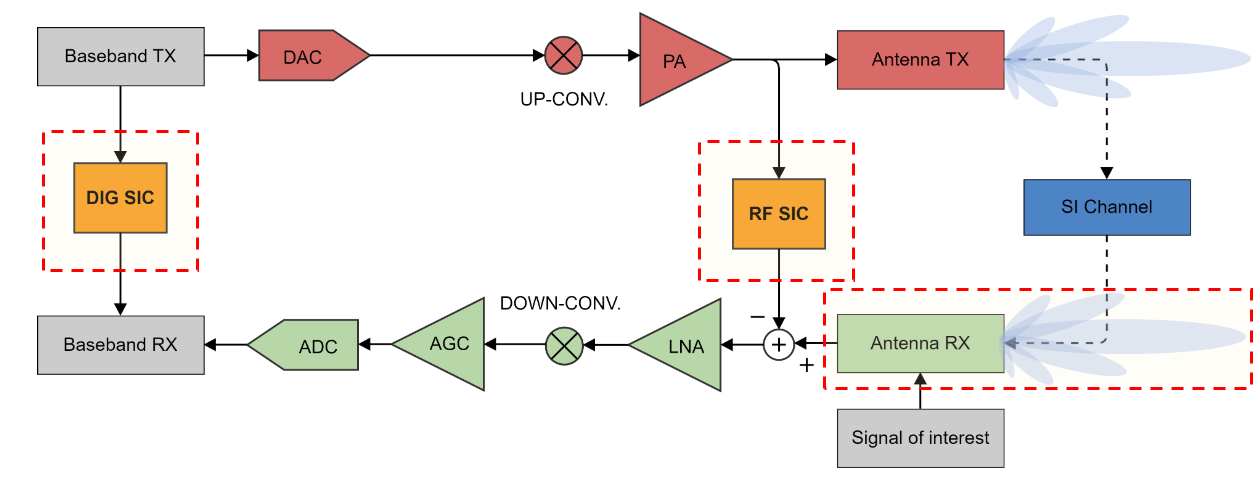
-
StatusCompleted
-
Status date2024-08-16
-
Activity Code1B.133
The ESA FDSat project ”Single Channel Full Duplex (FD) Techniques for Satellite Communications'' was motivated by the need to utilise the available radio frequency (RF) spectrum more efficiently, and as a consequence, reduce the cost-per-bit that is delivered.
In this context, the main objective of the FDSat project is to assess the feasibility of applying single channel FD techniques within satellite communication networks.
The main detailed objectives of the study are to:
-
Identify potential use cases for FD operation in SatCom.
-
Demonstrate the feasibility of FD operations in the selected SatCom use cases by means of analysis and simulations.
-
Identify the technological gaps and potential roadmap for developing and implementing the required SIC techniques needed to enable FD communications over the shortlisted SatCom use-cases.
-
Outline a proof-of-concept demonstrator that could be used for the validation of the most promising use-case and the identified techniques (in a possible future ARTES activity).

Most satellite communication systems operate by transmitting and receiving via two separate frequency channels to achieve the required isolation between signals. However, with ever-increasing data volume demands accompanied by pressure to reduce the cost per bit delivered, new techniques to utilise the available radio frequency (RF) spectrum more efficiently are continually needed.
Simultaneously transmitting and receiving information in a single frequency channel is known as Full-Duplex (FD) operation. FD has shown some promising results in terrestrial wireless communication application. In terms of benefits of the FD operation, besides the evident potential to increase the spectral efficiency, FD can also reduce the latency of the communication system, which is a critical aspect of satellite communication (SatCom) scenarios.
The FD technology has evolved tremendously between 2010 and 2020, moving from a laboratory idea to being incorporated into telecommunications standards. As a consequence of the encouraging results observed in terrestrial wireless communications, the ESA project FDSat ``Single Channel Full Duplex Techniques for Satellite Communications'' was conceived to assess the particular challenges of FD operation in SatCom scenarios. On one hand, SatCom is characterized by very high-power imbalance between the transmit and receive signals (a direct result of the very long transmission distances). On the other hand, both the user equipment (UE) and the satellite payload cannot afford high complexity hardware components, due to cost (in UE) and due to mass-volume limits (in the satellite).
Full duplex (FD) technology is utilized to enable communication devices to transmit and receive signals simultaneously. This is particularly useful as FD can (theoretically) double the network capacity, reduce latency, and improve spectrum utilization. However, the main technical and practical challenge of FD operation is the high levels of self-interference that needs to be completely cancelled in order to achieve the theoretical limits.
Recent advances in antenna design and RF circuits have made a great leap forward in reducing the level of self-interference (SI) between
the TX and RX. There are 3 key SI suppression techniques considered in FDSat project:
-
Antenna-based passive isolation techniques
-
Analog cancellation techniques
-
Digital cancellation techniques
These 3 components are highlighted with red-dashed boxes in the figure below. Usually, different cancellation techniques must be combined to achieve the intended suppression levels, including circulators, shielding, linear and non-linear digital filters, multi-tap analog filters and beam nulling among others. The corresponding metrics are detailed in the next section. Less mature technology (e.g. photonics) is also expected to play a role future designs, especially for large bandwidth applications.

The system architecture depends on the use-case. In general, 2 main architectures can be distinguished, as shown below:

Architecture 1 comprises two communication nodes (nodes A and B), whose communication links A-B and B-A operate at the same frequency and, thus, self-interference cancellation (SIC) is required in both nodes.
Architecture 2 comprises three communication nodes (nodes A, B and C), where communication links A-B and B-C operate at the same frequency and, thus, self-interference cancellation (SIC) is required only at node B.
ESA FDSat project started in March 2023 and concluded in June 2024.
-
The project was composed of four main tasks:
-
Survey of state-of-the-art
-
Use case identification and justification
-
Feasibility analysis
-
Proof-of-Concept demonstration outline
-
Technological roadmap
Completed.





